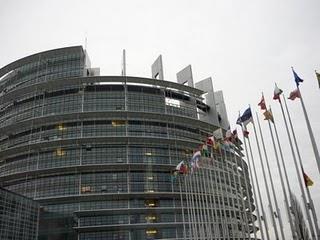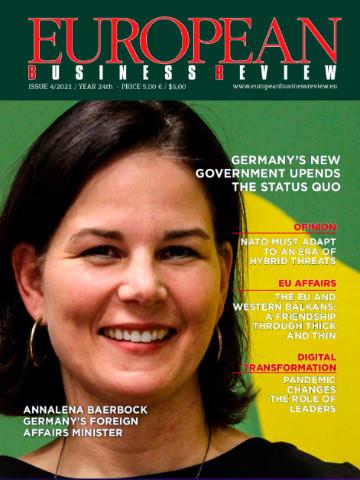Local mayors put it clear they do not want the European institution buildings to expand everywhere over the city since this would not be beneficial to the local community. Visionaries and architects on the contrary did share very interesting views on the potential capital function, cosmopolitan image and centre of European identity.
Brussels with its 150.000 EU-related jobs (of which a 40.000 Eurocrats) is becoming more and more a city of non-Belgian strangers. Half of the regions population is of foreign origin and a third is made up of immigrants (expats, Europeans and other). The European Commission’s office for infrastructure and logistics recently published a call for offers to develop a new site for Commission buildings outside the habitual Schuman area. There is talk of two locations to expand the EU’s presence in Brussels. New constructions are foreseen either at the Delta site or beside the railway sidings of Schaerbeek. The first phase of negotiations has started between the regional authorities and the European Commission about the Delta site that the Brussels region bought from the Belgian railway company NMBS/SNCB. Four years ago the European Commission presented a “multi-pole approach” to re-develop the European quarter (around Schuman) as the main site of Commission activity together with up to three large poles outside it. The choice of these poles outside, the heights of some buildings envisaged and how it might be integrated with the surrounding areas remain problematic questions to be solved.
But was Brussels ever meant to be the EU’s capital? The treaties or declarations of the EU have not declared any city as the "capital" of the EU. The Council of Europe was established in 1949 and chose Strasbourg as the symbolic meeting place. This post-war pan-European organisation was established to overcome rivalry and join forces for human rights, democracy and the rule of law on the whole European continent.
When the fathers of the European cooperation launched their first declaration, it was in Paris. The signing in 1951 of the European Coal and Steel Community (ECSC) was again in Paris and the 1957 Treaties establishing the European Economic Community (EEC) and European Atomic Energy Community (Euratom) were signed in Rome. The governing bodies of the ECSC got located in Luxemburg, a provisional choice. It was only when the new EEC and Euratom bodies were to be located somewhere that Luxembourg -having the ECSC bodies- had objections and Brussels got the new offices. Belgium had first proposed the city of Liege, but from the early beginning it was stipulated in the Treaties that seats were to be decided by common accord of governments. The merger of institutions following the 1965 Merger Treaty, taking effect in 1967, moved some services from Luxemburg to Brussels.
As for Strasbourg, with its very hospitable and cooperative authorities, it only got the official seat status for the European Parliament arising from the early commuting between Luxemburg and Strasbourg for the Assembly’s plenary meetings. The provisional seat in Luxemburg (where the secretariat of the European Assembly is still located) was too small and still building its interpretation facilities when the Parliamentary Assembly could provisionally make use of the facilities at the Council of Europe’s premises in Strasbourg. First hosted by the Council of Europe in the ‘House of Europe’ but from 1977 in the ‘Palace of Europe’ until 1999 when the European Parliament got its own hemicycle building across the river. It was the city of Strasbourg that build the European new place (Louise Weiss building) of which the Parliament became the owner only in 2003. Having the seat of the European Parliament and its 12 weeks of plenary sessions a year is very important to the Strasbourg citizens. Estimations show that each single plenary week is worth a 4 million euro to be injected into the city's economy.
The current situation got formalized at the European Council meeting of 12 December 1992 in Edinburgh (Scotland) when a final agreement was made. This agreement made it into a Treaty protocol (Treaty of Amsterdam) and is now unaltered included in the Lisbon Treaty.
Despite the ‘OneSeat’ campaign collecting 1 million signatures in 2007 and several EP votes to scrap Strasbourg sessions, the three-city arrangement (Strasbourg, Luxemburg, Brussels) -better known as the "travelling circus- was maintained. The extra costs compared to a scenario of only one location represents a 200 million euro a year. The argument often used for Strasbourg is that this border-Alsatian city symbolizes the French-German reconciliation on which the post-war European integration was build. However sympathetic it is not a very genuine claim since the Franco-German treaty of Friendship -also known as the Elysée Treaty- of January 1963 was signed at the Elysée Palace in Paris.
There was some debate about the seats of the different European institutions when the European Convention was busy drafting the latter Constitution. When this eventually got scaled-down to the now adopted Lisbon Treaty, the famous protocol remained untouched. Some suggested that Strasbourg could host the European Council meetings, minor institutions such as the Committee of the Regions, a future European University or the proposed European Institute of Technology, all in exchange for the European Parliament. More recently the idea was defended to locate the Mediterranean Union in Strasbourg in exchange for the European Parliament making of Brussels the unique workplace for EU affairs.
Before European citizens from across the EU member states, now 27, can truly consider a European city as their EU capital, the governments of the member states must agree on one single workplace for all relevant European institutions with its staff.
Until 2002 the rotating Presidencies organised the EU’s formal Summits in their own countries but a deal made in Nice (Treaty of Nice, 2001) rang in the end of this practise and lead to the geographical fixation of the European Council meetings in Brussels. The first informal EU Summits of 1961 were held in Paris and Bonn respectively and the first formalized of its kind in Paris again in 1974 while the inaugural European Council was held in Dublin in 1975. Since the European Council got its first permanent President (December 2009) a new building is being built in between the Brussels Justus Lipsius building and the Residence Palace press centre to become the future seat of the European Council for any formal EU Summit.
Whether the European integration will ever lead to a true EU capital with one geographical location for its main institutions -including the European Parliament- is to be seen. The Capital of Europe or not …… the EU is shaping Brussels, and vice versa!
A Capital of Europe? Strasbourg versus Brussels
“Capital of Europe: how the EU is shaping Brussels – and vice versa?” That was the question raised at a recent conference organized by weekly newspaper European Voice debating the place, infrastructure and architecture for the European scene in Brussels.


But was Brussels ever meant to be the EU’s capital? The treaties or declarations of the EU have not declared any city as the "capital" of the EU. The Council of Europe was established in 1949 and chose Strasbourg as the symbolic meeting place. This post-war pan-European organisation was established to overcome rivalry and join forces for human rights, democracy and the rule of law on the whole European continent.



 By: N. Peter Kramer
By: N. Peter Kramer

